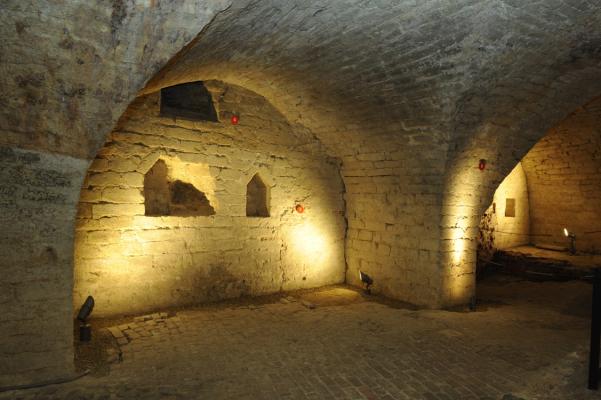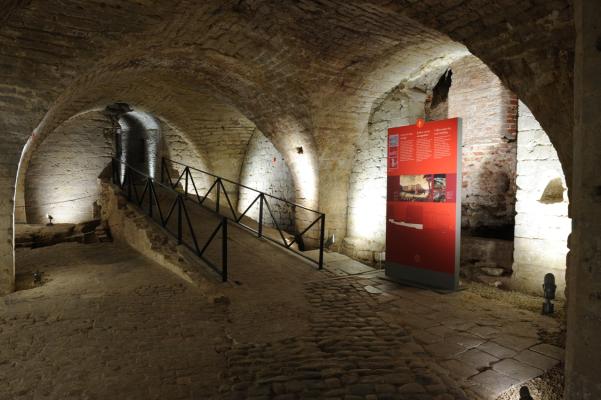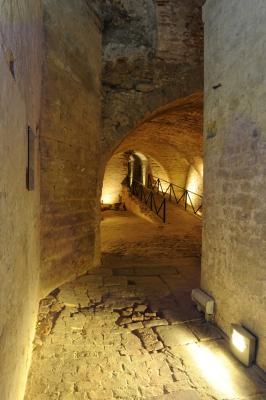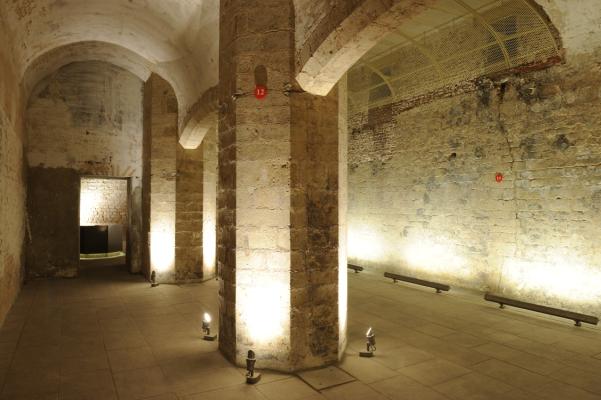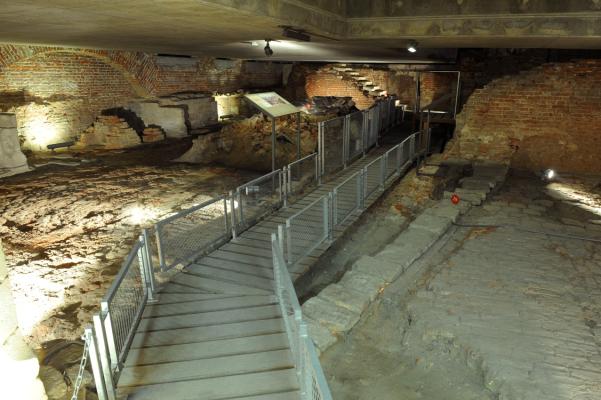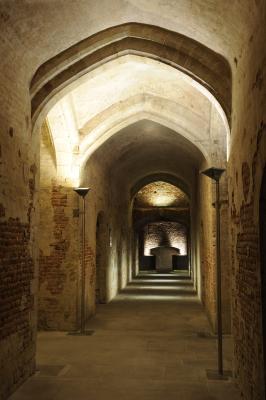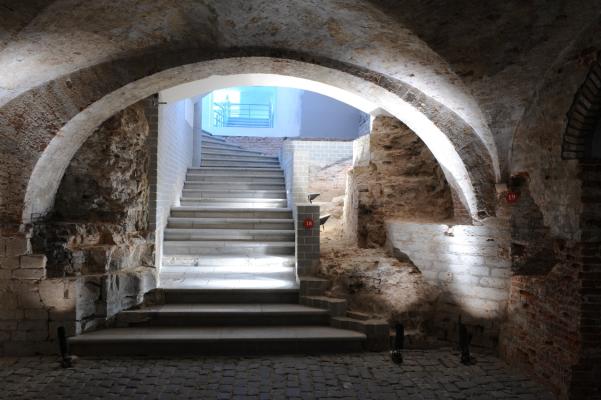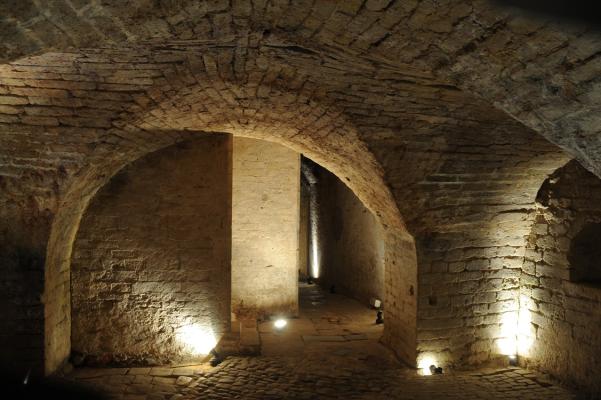To be seen today
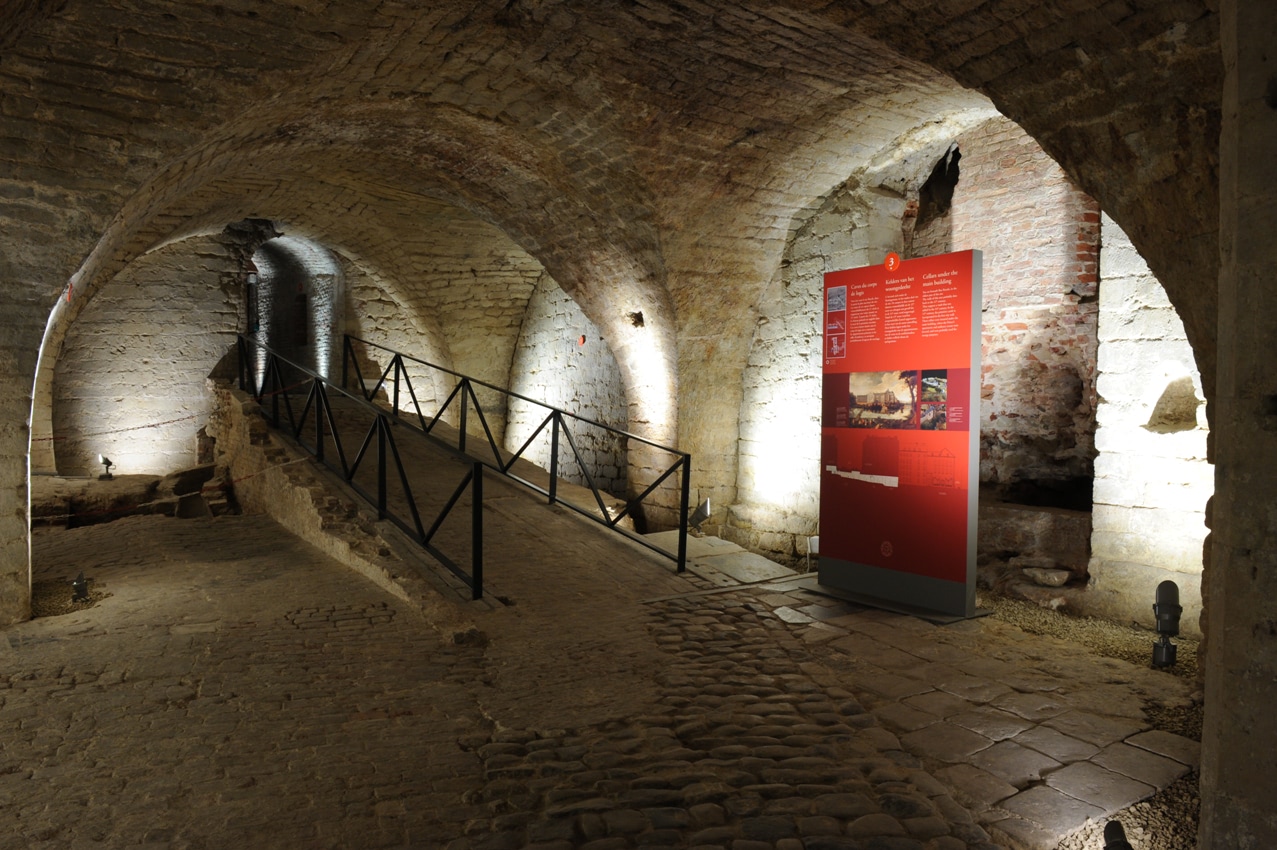
The remains of the former palace of Brussels, Hoogstraeten House, and a street all constitute the archaeological site of Coudenberg. They extend under Place Royale, Rue Royale and some of the buildings around the square.
Located underneath Rue Royale, the cellars of the main building are the oldest part of the site. They were situated under the main building, where the Prince’s apartments and audience rooms were located, and were probably used for storage purposes.
Within the building that housed the chapel for the palace, only one level of basement survives under the BIP (Brussels Info Place). These rooms had no liturgical function and were used as cellars and kitchens.
The chapel was built during the first half of the 16th century, during the reign of Charles V, as replacement of an older medieval chapel.
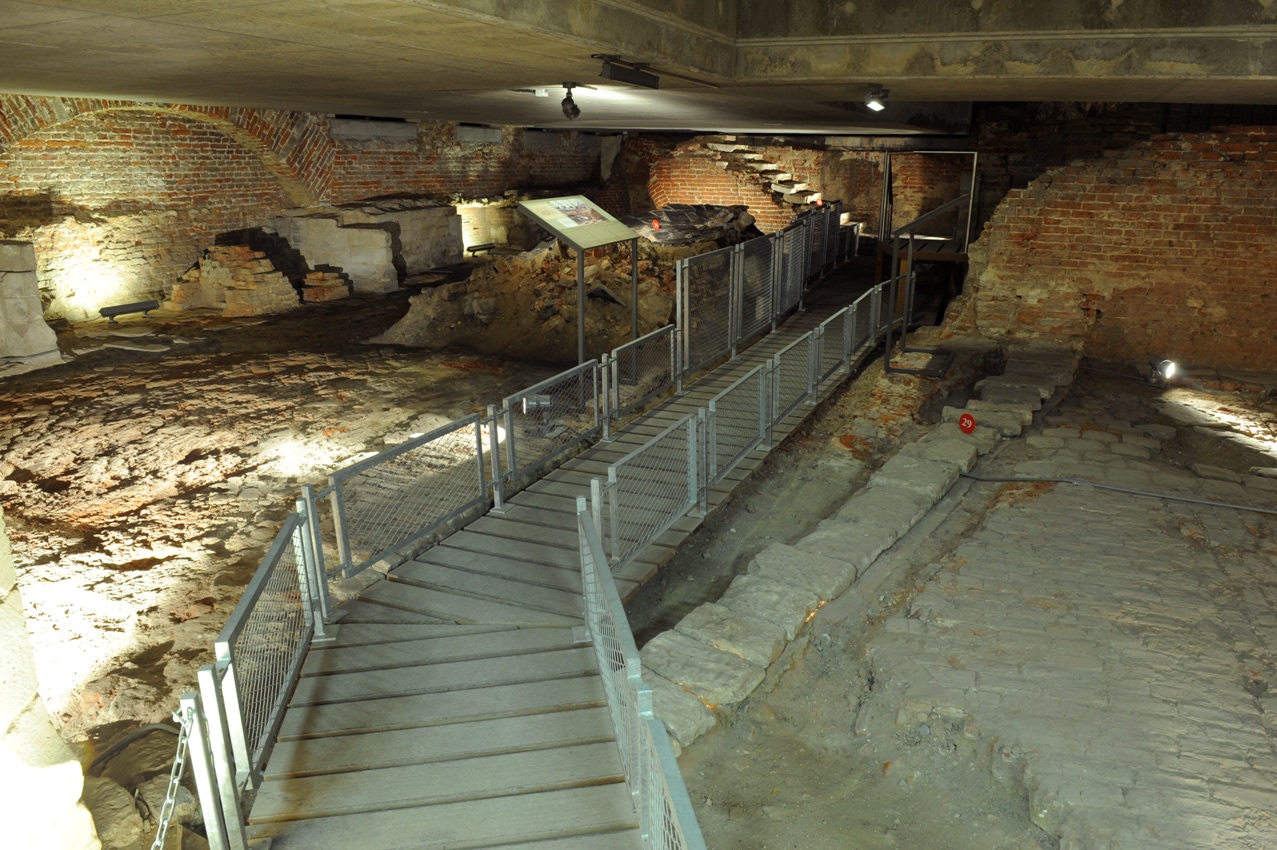
Within the big building that housed the Aula Magna, the palace’s banqueting hall, only cellars survive, which are located directly underneath Place Royale. Kitchens and storage occupied this lower level.
The Aula Magna was built between 1452 and 1460. It was commissioned by the City of Brussels, under the instructions of the Duke of Brabant, Philip the Good, who also was Duke of Burgundy. The prestigious banqueting hall, the Aula Magna, was the scene of the major events of the Brussels Court : the abdication of Charles V (1555), princely wedding feasts, as well as official receptions and balls.
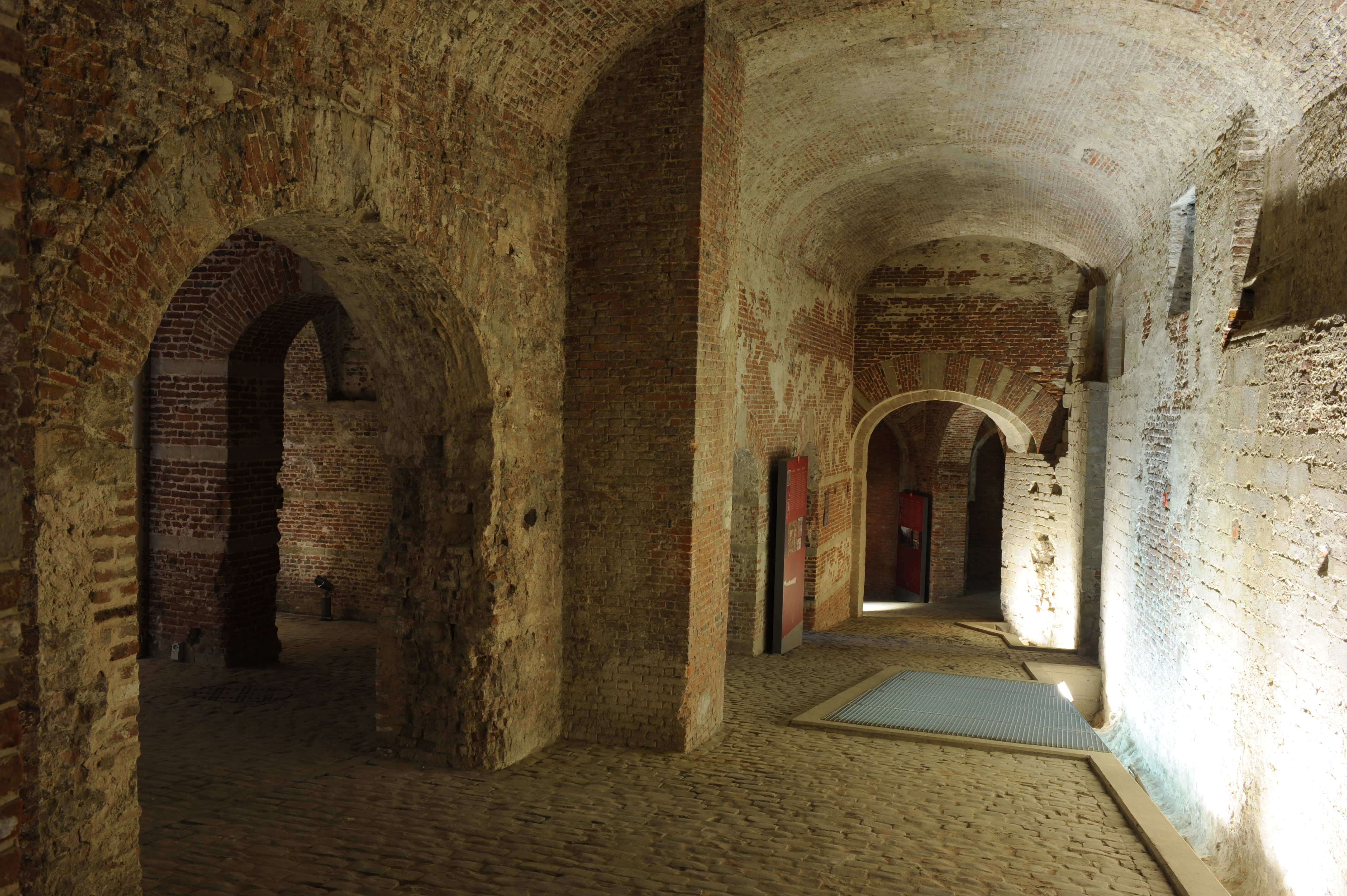
Today’s Rue Isabelle is underground, but it used to be open to the sky. Of medieval origins, the street ran along the Palace from Place des Bailles (public square in front of the Palace) to the Saint-Michael-and-Gudula Church, and followed the strong slope of the Coperbeek valley.
The Coudenberg palace was bordered with imposing private mansions owned by the nobility and court advisers, in particular the Hoogstraeten House, which was the Brussels residence for the Lalaing family. Around 1516-1517, Antoine de Lalaing, 1st count of Hoogstraeten, commissioned a gothic style gallery.
